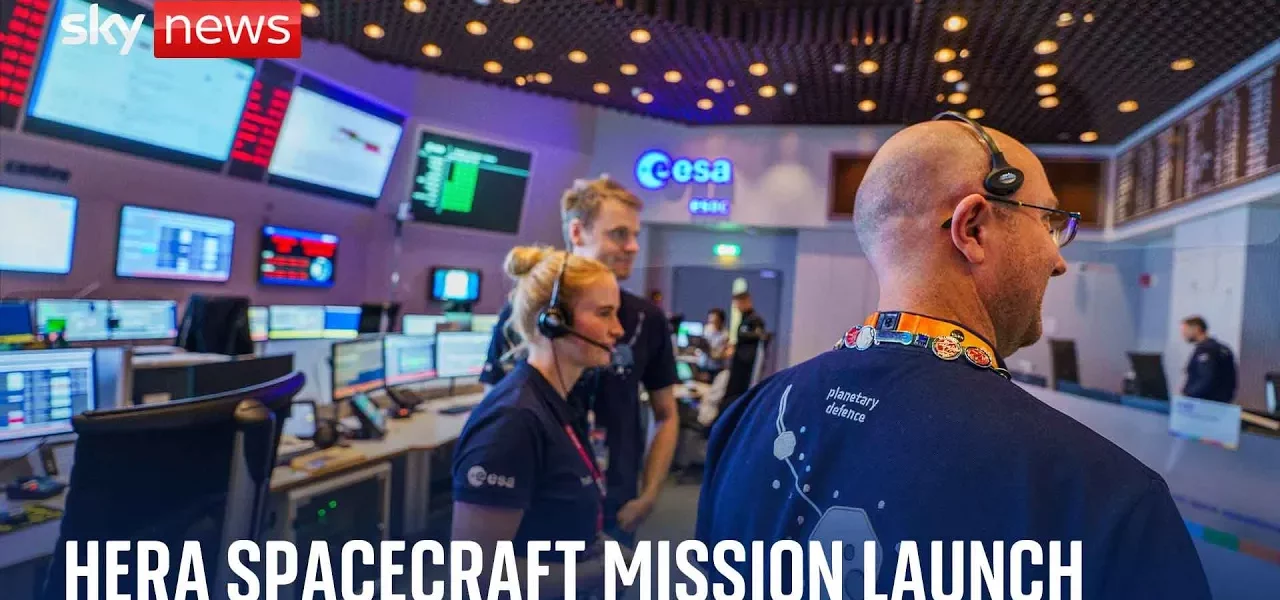Falcon 9 Launch of the Hera Spacecraft: A New Era in Planetary Defense

The Falcon 9 rocket has successfully launched the Hera spacecraft, marking a significant milestone in space exploration and planetary defense. This article delves into the details of the launch, the technology involved, and the implications for future missions.
Introduction
The launch of the Falcon 9 rocket carrying the Hera spacecraft represents a pivotal moment in our quest to understand and mitigate the threats posed by asteroids. As part of a comprehensive planetary defense strategy, the Hera mission is designed to gather crucial data that will inform our approach to protecting Earth from potential asteroid impacts. This article explores the intricate details of the launch, the technology used, and the broader implications of this mission.
Overview of the Falcon 9 Launch
Launch Sequence
Falcon 9’s launch sequence is meticulously planned and executed. Key phases include:
- Ignition and Liftoff: The engines are ignited, and the rocket lifts off from Cape Canaveral.
- Throttle Down: The rocket reduces engine power in preparation for maximum dynamic pressure (Max Q).
- Max Q: The rocket experiences the period of maximum aerodynamic pressure.
The Importance of Max Q
Max Q is a critical point in the launch where the atmospheric pressure on the rocket is at its peak. Successfully navigating this phase is crucial for the rocket’s structural integrity.
Mission Objectives and Payload
Hera Spacecraft Overview
The Hera spacecraft is designed to conduct a detailed investigation of the asteroid system. Its primary objectives include:
- Analyzing the impact crater created by the previous DART mission.
- Investigating the asteroid’s composition and structure.
- Collecting data to enhance our understanding of asteroid dynamics.
CubeSats on Board
In addition to the Hera spacecraft, two CubeSats, Juventus and Milani, have been deployed to gather supplementary data. Their missions include:
- Juventus: Focused on the structural composition of the asteroid.
- Milani: Aimed at analyzing the asteroid’s chemical makeup.
Technical Details of the Launch
Engine Performance and Trajectory
The Falcon 9 rocket utilizes nine Merlin engines for its initial ascent, transitioning to the MVAC engine for the second stage. Key technical aspects include:
- Thrust of approximately 220,000 lbs in vacuum.
- Two planned burns of the MVAC engine to reach the targeted drop-off orbit.
- Nominal trajectory tracking throughout the flight.
Fairing Deployment
Following the initial ascent, the fairing halves were successfully deployed, showcasing the reusable design that has been optimized over multiple missions.
Future Implications and Conclusion
Significance for Planetary Defense
The Hera mission builds upon the legacy of previous missions like DART, offering vital insights into how we can protect Earth from asteroid threats. The technology developed for this mission, including the CubeSats, is expected to pave the way for future space exploration initiatives.
Conclusion
The successful launch of the Falcon 9 rocket carrying the Hera spacecraft marks a new chapter in our understanding of planetary defense. As we continue to monitor the mission’s progress, the data collected will be invaluable for shaping future strategies to safeguard our planet. We encourage readers to follow along with the mission updates and support ongoing efforts in space exploration.
“`




